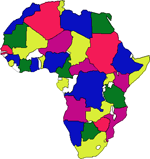[Published: Wednesday October 08 2025]
 Tracking productivity trends amid economic headwinds: insights from the latest OECD data
By Nhung Luu and Hector Moreno
PARIS, 08 Oct. - (ANA) - Productivity growth is central to economic development and competitiveness. The OECD Compendium of Productivity Indicators 2025 offers a comprehensive snapshot of productivity trends, focusing on key components like capital and labour inputs. In this blog post, we unpack the key findings for 2023 and 2024 and reflect on the way ahead.
Slowdown of global growth amid tight financial conditions and geopolitical uncertainty
In 2023, the macroeconomic landscape presented challenges. Global growth slowed markedly to 1.7% in 2023 from 3% in 2022, as companies navigated a mix of tight financial conditions – including elevated interest rates and reduced access to credit – amid ongoing geopolitical uncertainties. At the same time, global trade expanded at a slower pace, reflecting broader shifts in the momentum of globalisation.
While 2024 signaled a transition towards lower interest rates in many countries, it also marked an intensification of geopolitical tensions.
How did productivity hold up in this challenging environment? The 2025 edition of the OECD Compendium of Productivity Indicators explores this question, offering insights into how productivity evolved across the world in 2023 and 2024.
Subdued overall productivity growth in 2023 and 2024
In 2023, labour productivity – measured as GDP per hour worked – for the total economy rose modestly by 0.6% on average across OECD countries. However, this average masks divergent trends, with indications of a widening gap between the euro area and the United States. Labour productivity fell by 0.9% in the euro area, the steepest drop since 2009, extending a downward trajectory observed since 2021. By contrast, the United States recorded a 1.6% increase, matching its 2019 growth rate.
Effects of artificial intelligence remain elusive in productivity statistics
Experimental OECD estimates suggest that labour productivity growth stagnated at around 0.4% in 2024, on average, across OECD countries excluding Türkiye. This subdued performance stands in contrast to the optimism sparked by the release of generative Artificial Intelligence (AI) tools like ChatGPT and Gemini in recent years, which raised hopes for a productivity boost. The weak labour productivity growth in 2023 and 2024 suggests that sizeable benefits have yet to materialise. This is not surprising, as realising productivity gains from AI requires a combination of skilled labour, appropriate applications, and complementary investments. As such, the potential productivity gains may only become visible over time.
Weak multifactor productivity growth weighs on labour productivity performance
The modest increase in average labour productivity across the OECD in 2023 conceals significant differences across countries. Labour productivity rose in roughly half of member countries, while the other half saw declines of varying magnitude. Notably, strong productivity gains in several non-EU countries, such as Costa Rica and Korea, helped lift the OECD average.
Key to the weak labour productivity performance was disappointing growth in multifactor productivity (MFP), which measures the overall efficiency with which an economy converts labour and capital into output. In 2023, MFP stagnated or even turned negative in most OECD countries (Figure 3). The slowdown in MFP was particularly pronounced in Luxembourg and Austria, where MFP fell by about 2%. By contrast, MFP increased significantly in the Slovak Republic (+4.6%) and Slovenia (+2%).
Labour productivity performance in 2023 was driven by within-industry developments
To better understand the drivers of economy-wide changes in productivity, labour productivity growth can be broken into three components. The first is a within-industry effect, accounting for productivity growth within each industry. The second and third come from shifts in total hours worked between industries: one referring to shifts between industries with different productivity levels (static), and the other to reallocations between industries with different productivity growth rates (dynamic).
Together, the sum of the static and dynamic components form the cross-industry reallocation effect, which played a minimal role in 2023, as shown in Figure 4 for the United States and the euro area. As has typically been the case in recent years, excluding the COVID-19 shock, within-industry effects were the main driver of changes in labour productivity. However, in about half of the countries with available data, the within-industry contribution to labour productivity was negative or close to zero, dampening overall productivity performance.
Knowledge-intensive sectors, such as information and communication, and finance, saw falling productivity in many countries in 2023. Similarly, energy-related industries, particularly electricity, gas, steam, and air conditioning supply, weighed on economy-wide productivity, notably in Greece and Croatia. In contrast, manufacturing was a key driver of productivity growth in several economies, including the Slovak Republic and Denmark. - (ANA) -
AB/ANA/08 October 2025 - - -
|





